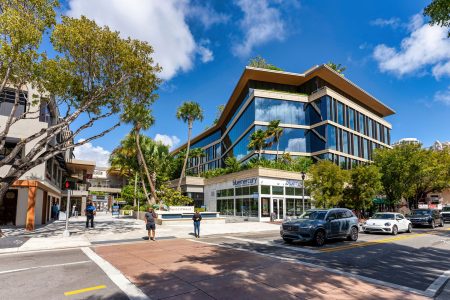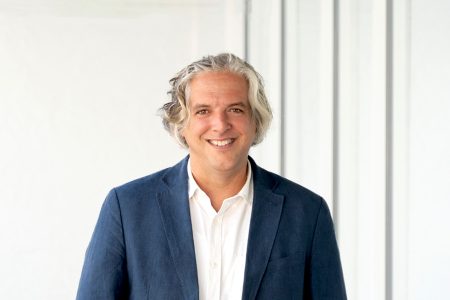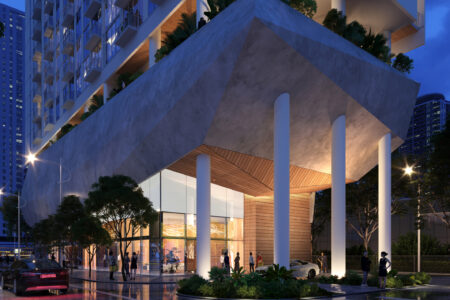Miami Design and Urban Planning: A Laboratory for New Thinking

RSP’s Andrew Burnett shares his thoughts on the next generation of multi-family development coming out of the Miami design and architecture community.
To say that Miami is not like other US cities may be one of the real estate industry’s greatest understatements. The city’s market dynamics tend to be much more, well, dynamic than most metro areas its size. Consider the demographic diversity, the cultural richness of its neighborhoods, the flow of capital (both financial and intellectual), and the deep legacy of extraordinary architecture and design. And that doesn’t even begin to get into the food. Or the music.
It is little wonder, then, that Miami (and South Florida generally) has become one of RSP’s most promising and active regions—a laboratory for new thinking in residential-driven multi-use design and fertile ground for a new way of thinking about commercial development.
No longer a “vacation stop over” or an investment playground for LatAm money, Miami has had a major image makeover in the last few years. Consequential things happen here, especially when it comes to real estate; and while it may not be exactly what hedge fund baron Ken Griffin hypes as the next Manhattan, the rest of the country (as well as the rest of the world) is taking notice. Out-of-staters, not to mention foreign nationals, are pouring into Florida, especially the greater Miami area, buying homes at an extraordinary pace (and price) and laying new tracks for residential development.
The Housing Crisis That Isn’t
While many cities are undergoing housing crises, Miami is actually doing something about it. A number of public policy initiatives show signs that the region is all for smart, pro-development thinking that relies on enlightened urbanism, resilient planning and public transit. This is not a place of one-size-fits-all NIMBYism. Two encouraging examples: Miami-Dade County’s push for Rapid Transit Zoning (RTZ), which is meant to encourage development along mass transit corridors, and the State of Florida’s Live Local Act, which incentivizes the development of affordable housing by the private sector primarily by preempting local zoning laws and providing tax incentives.
Neither initiative is without resistance, of course, but the momentum is absolutely heading toward residential-driven mixed-use development—density, live/work/play activity, and walkability. Gone are the days of monolithic, office-focused downtowns; instead, vibrant, experience-driven social districts that emphasize the human element and the public realm are becoming the standard.
Mixed-Use Central
Grove Central is a great example of the smart urban planning happening in Miami. Designed by the Miami-based Touzet Studio with RSP as the Architect of Record, Grove Central is a transformative transit-oriented development (TOD) that has shifted the center of gravity of one of Miami’s most dynamic and evolving neighborhoods, Coconut Grove, and redefined the traditional delivery model for commercial real estate. The project integrates a multi-modal transportation hub and a 23-story residential tower with 402 multifamily and workforce units; a structured 1,250-space public parking deck; approximately 170,000 square feet of neighborhood retail; and a series of local public space improvements.
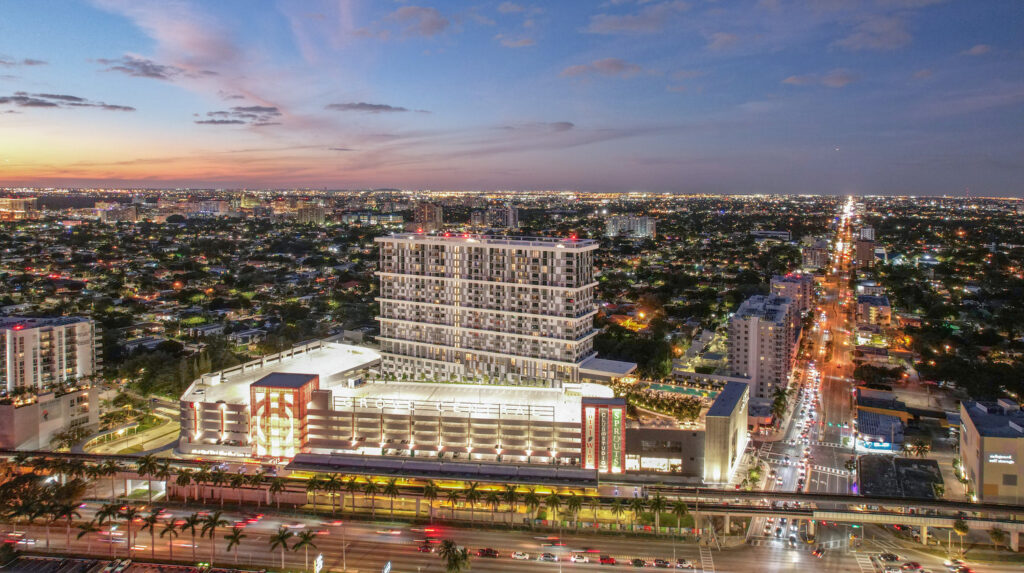
Grove Central has come to exemplify smart growth in South Florida, converting what was once a vacant surface parking lot beside a Metrorail station into a multi-modal hub that stands as a prototype for future development. As a “stacked” multi-use development, Grove Central brings concentrated residential density, commercial vitality and an enriched pedestrian experience that embodies community-building and resilient planning principles—direct access to public transit, affordable multi-family living and street-oriented retail, and the latest in resilient urbanism.
Structured as a public/private partnership between local co-developers (Grass River Property and Terra) and Miami-Dade County, which owns the land, Grove Central advances the County’s initiative aimed at improving connectivity between residential living, commercial vitality and mass transit. Along with its Metrorail access, Grove Central links directly with The Underline, a 30-mile linear park that stretches from the Dadeland South Station to the Miami River in downtown’s Brickell district, as well as Miami-Dade County’s bus system and the City of Miami’s trolley network.
Miami Design: Looking Forward
The success of Grove Central leads us to a few other projects currently on the boards, including a 26-story mixed-use tower for GFO Investments just west of the Adrienne Arsht Center. The tower, located on 14th Street, is less than a quarter mile from two metro mover stations and takes advantage of the RTZ process to encourage dense, regionally connected urban development. The program includes 280 units of mostly one- and two-bedrooms plus more than 20,000 square feet of retail and amenity space on the first three levels. The tower is slightly elevated, giving it a dramatic, sculptural podium that sets off the building’s floor-to-ceiling glass elevations.
We’re also working on early designs for projects utilizing the new “live local” legislation out of the State of Florida. These projects are fascinating and have the potential to make tangible progress in providing affordable housing dispersed throughout some of the best real estate in the country. Employing a unit mix that includes one or two levels of micro-units (400 to 550-square feet studios) and 10 or 11 levels of larger, luxury units above offers economic diversity in a high-quality project. The unit plans, sizes and price points all have broad appeal, especially on the affordable side, and give people the option to live close to work and transit links.
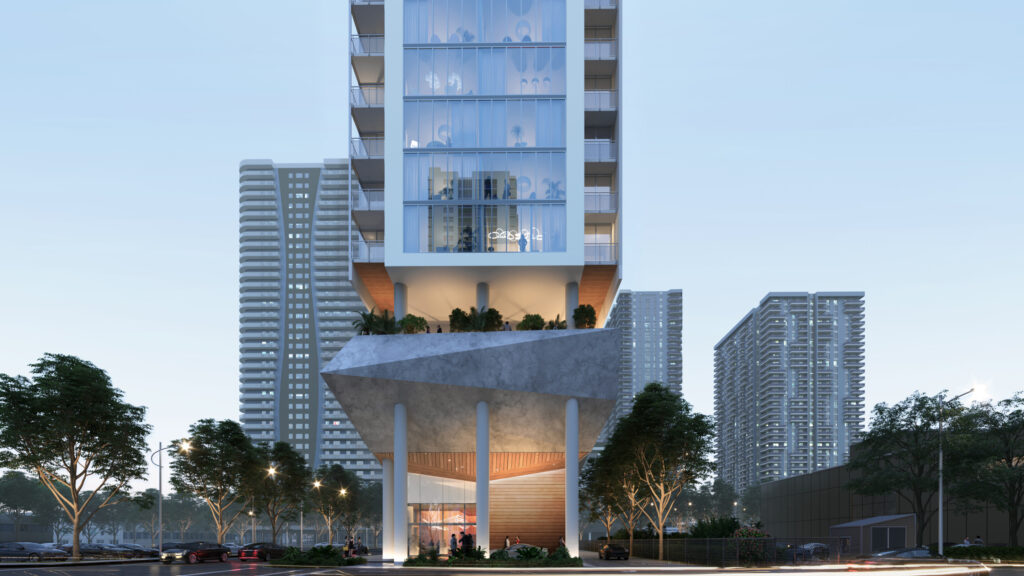
Urban Renaissance
Miami stands on the brink of an urban renaissance, with the potential to model a visionary urban landscape that champions sustainability and vibrancy. The city’s latest mixed-use opportunities integrate commercial success with architectural innovation, comprehensive transportation, cultural richness, diverse housing options, community spaces, and an unwavering dedication to environmental resilience. They set a new standard for urban living. As Miami leads the charge in its mixed-use revolution, it exemplifies the possibilities of what cities could and should aim to achieve.


